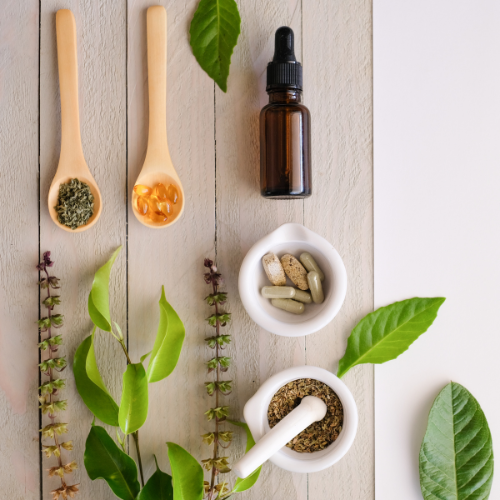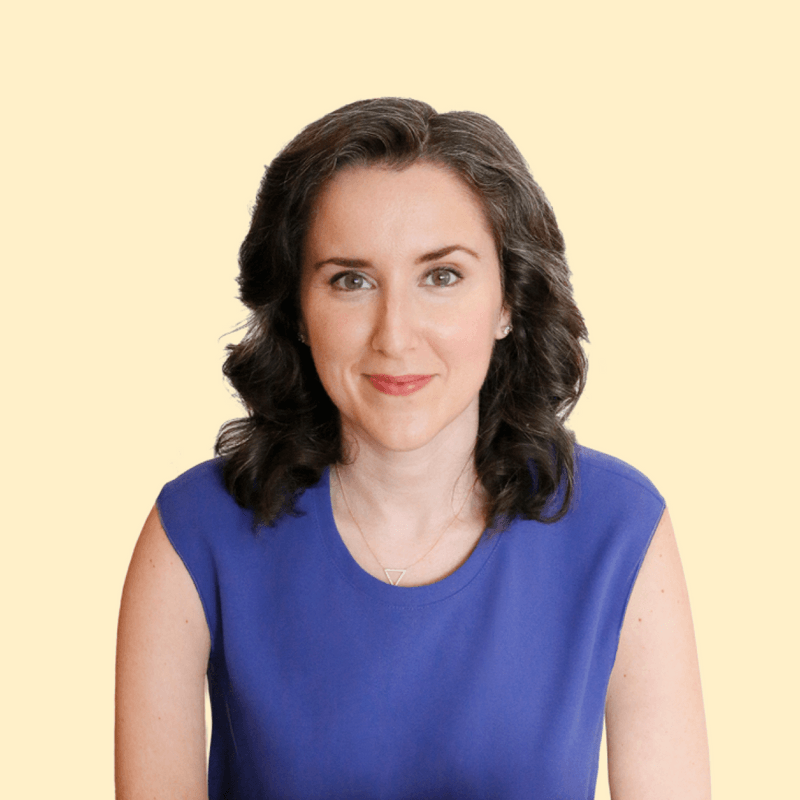6 Signs You Have Uterine Fibroids (And How To Biohack Your Way Out of Them)
- Last updaed on

Endometriosis gets a lot of press these days, with celebs like Lena Dunham and Padma Lakshmi talking openly about their struggles with this painful hormonal condition. PCOS is also getting more recognition, thanks to Star Wars actress Daisy Ridley and a growing awareness of PCOS as a common cause of infertility for American women.
So if you struggle with period problems, but haven’t been diagnosed with endometriosis or PCOS, you might think that having heavy, uncomfortable periods is just something you have to deal with. Or maybe you're confused about the real root cause.
Your symptoms might actually be caused by uterine fibroids. Studies show that most American women will develop fibroids at some point during their lives. And while almost all of these non-cancerous tumors are benign (and some cases are asymptomatic), a lot of fibroids grow large and lead to a host of unpleasant symptoms — symptoms that you might otherwise chalk up to the idea that that’s just how your body works.
Do fibroids affect hormones?
Or, is it the other way around? In fact, fibroids are fueled by hormone imbalances (just like PCOS and endometriosis). So, you can take steps to balance your hormones and ease fibroid symptoms.
One of the most common imbalances when it comes to fibroids is excess estrogen. An overload of estrogen seems to make fibroids grow larger. Having too much estrogen relative to progesterone is a common hormone imbalance because so many things in our environment increase estrogen, including the foods we eat, the foods we don’t eat, exposure to toxins, poor sleep, stress, and other environmental factors. At times, it feels like the world is conspiring to make our estrogen go up. But you can take simple steps to biohack your hormones and bring estrogen and progesterone back into balance. Read on to learn how!

Fibroid Symptoms
Fibroids give rise to some telltale symptoms. Here are some signs that fibroids might be at a root cause of your period problems:
- Heavy flow. This is one of those symptoms that can be easily overlooked or assumed is "just how your period goes", but heavy flow can be a sign of fibroids.
- Periods that last more than 7 days. If your period tends to run longer than a week, you might think that you just drew the short end of the menstrual stick. But overly long periods can also be a sign of fibroids.
- Feeling like you have to pee all the time... but nothing comes out. You might never have thought of this as a symptom of an underlying hormone imbalance, but this too can be a sign of uterine fibroids.
- Pelvic pain/pressure. Another potential symptom of fibroids.
- Constipation. Constipation can strike for any number of reasons, many unrelated to hormones, but if you experience it in combination with other symptoms, it could be related to uterine fibroids.
- Backaches and/or leg pain. Like constipation, a sore back and other aches might strike you as normal and not connected to your endocrine system. But in some cases, just like constipation, this can be connected to fibroids.
Fibroids are often diagnosed during a routine pelvic exam and confirmed with an ultrasound. If you suspect that you have uterine fibroids, consult with a trusted healthcare practitioner. And if you discover that fibroids are an issue for you, Western medicine will tell you that the cause is unknown and that the only “treatment” is taking hormonal birth control. But the Pill doesn’t address the underlying root cause of fibroids, which is hormone imbalance, and it can actually make hormone imbalances worse. In some cases, doctors offer surgery to remove fibroids, but an invasive procedure (with a high risk of generating scar tissue that can complicate future pregnancies) isn’t an ideal choice unless absolutely necessary.
Biohack Your Hormones and Fix Fibroids Naturally
Happily, there’s a lot you can do with nutrition and lifestyle to address the hormone imbalances that underlie uterine fibroids, especially around the connection between estrogen and fibroids. Here’s how:
- Understand your cycle. You can help bring hormones into balance by tracking your cycle and shifting what you eat and how much you move, so that your daily routine matches each distinct phase of your 28-day cycle. I call this Cycle Syncing®, and if you’re serious about biohacking your hormones and easing symptoms, this is the first and best place to start.
- Eat to balance estrogen. Fibroids are affected by excess estrogen in the body, which makes them grow. (They often decrease in size after menopause, when estrogen in the body is lower). So it’s important to eliminate dairy and meat raised with synthetic hormones that can act like estrogen in the body, and to prioritize foods that help modulate and balance estrogen, like flax seeds, beans, whole grains, pears, and apples.
- Balance your microbiome. The microbiome contains a colony of bacteria that helps metabolize estrogen. This colony is called the estrobolome—and when the microbiome is healthy, so is the estrobolome. But when the good and bad bugs in the microbiome are out of balance, the estrobolome can’t do its job efficiently and estrogen builds up. Ditching sugar, dairy, and gluten is the first step in healing the microbiome. (If you’re ready to give up those estrobolome-destroying foods, try my free 4-Day Detox.) Another key to building and maintaining a healthy microbiome is supplementing with a great probiotic.
- Support liver function. The estrobolome metabolizes used-up estrogen. Then the liver gets it ready for elimination. So if your liver is sluggish (just like if your microbiome is imbalanced), estrogen can build up in the body. The liver thrives when we eat specific liver-nourishing foods—and it gets clogged and sluggish when we eat high fructose-containing processed foods and when we drink caffeine. You can also use targeted supplements to improve liver function. The supplements in my BALANCE Supplement Kit help support the liver.
Remember that once you have the right information about how your body really works, you can start making health choices that finally start to work for you! You can do this – the science of your body is on your side!





